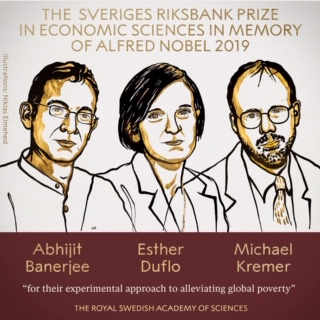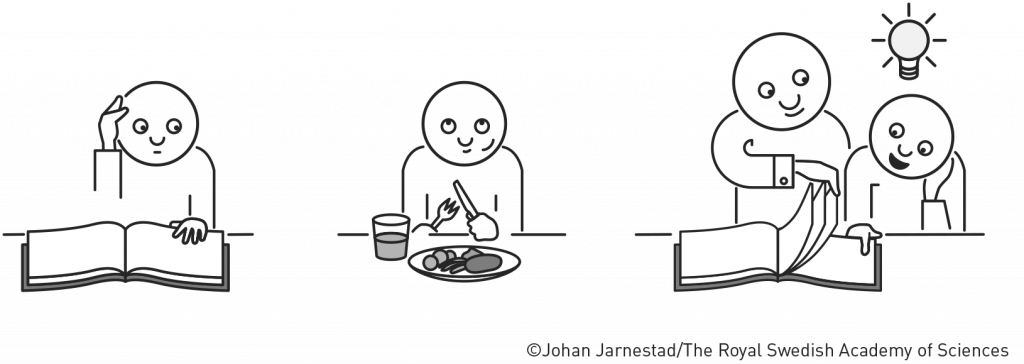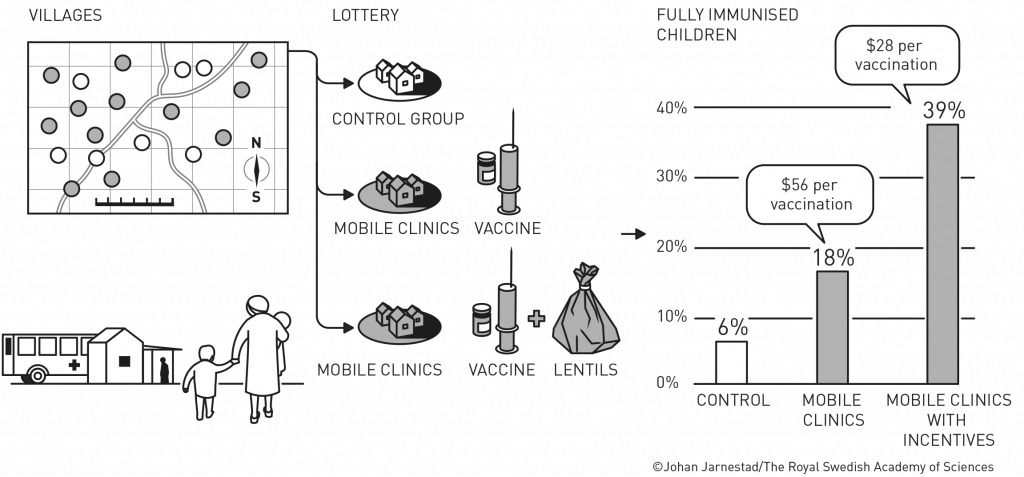 The three winners of the 2019 Nobel Prize for Economics — Banerjee and Duflo (both of MIT) and Kremer (working at Harvard) — were recognized for their work on alleviating global poverty.”
The three winners of the 2019 Nobel Prize for Economics — Banerjee and Duflo (both of MIT) and Kremer (working at Harvard) — were recognized for their work on alleviating global poverty.”
“Over 700 million people still subsist on extremely low incomes. Every year, five million children still die before their fifth birthday, often from diseases that could be prevented or cured with relatively cheap and simple treatments,” The Nobel Prize website notes.
To respond to this audaciously huge challenge, Banerjee, Duflo and Kremer asked quite specific, granular questions that have since shaped the field of development economics — now part of mainstream economic theory. The researchers recognized productivity differences both across rich and poor countries and within countries themselves. What underpinned those differences? they asked. They looked into the education systems and student outcomes in communities, identifying different input factors like the cost and scarcity of textbooks, school meals, or physical access to institutions. The trio then tested different combinations of factors adding into different groups remedial tutoring, access to credit (especially microcredit programs), technology, and health care services, along with new models for teacher accountability and school governance.
The research demonstrated that just adding additional resources (books, teachers) does not directly result in improved student outcomes. People can have a “present bias,” whereby long-term goals and hopes can be overwhelmed by the exigencies of “today’s” basic needs. The team addressed this challenge called “bounded rationality,” which has led to some people reluctant to adopt modern technology. This causes those folks to postpone investment decisions that might seem rational to make today.
An example is a key input of health, such as providing free vaccinations and mobile clinic visits. These can be bolstered  by an incentive like a bag of lentils to motivate people to have their children vaccinated, illustrated in the drawing below.
by an incentive like a bag of lentils to motivate people to have their children vaccinated, illustrated in the drawing below.
Start with education. The first drawing, from the Nobel Prize’s portal, illustrates the first-order impact of education on children. Education is a formidable pillar in the pantheon of social determinants of health, leveraged in the work of this Nobel trio.
Now check out the next graphic from the Nobel Prize site’s discussion of this year’s winners’ approach to alleviating poverty. This illustrates the health and healthcare impacts of what promoting education accomplished in the community.
 Consider the equation:
Consider the equation:
Mobile Clinics + Vaccine + Lentils.
In terms of SDoH, those are the social determinant factors of..
- Transportation,
- Access to health care services, and
- Food/nutrition and financial stability.
The Nobel Laureates’ research has directly influenced public policy in India, where programs based on the learnings have been deployed for over 5 million Indian children. An estimate from J-PAL, a global research network, calculated that this work has already impacted over 400 million people.
Note that these three Nobel Laureates, all working in Cambridge, Massachusetts, were born in India, France, and the United States, respectively.
Here’s a fact sheet detailing the team’s research.
For your further inspiration, take a look at the Nobel Prize awarding ceremony here lauding these three brilliant scholars…
 Health Populi’s Hot Points: Twenty years ago, the U.N. defined “extreme poverty” as the severe deprivation of basic human needs, including food, safe drinking water, sanitation facilities, health, shelter, education and information, depending not only on income but also on access to services.
Health Populi’s Hot Points: Twenty years ago, the U.N. defined “extreme poverty” as the severe deprivation of basic human needs, including food, safe drinking water, sanitation facilities, health, shelter, education and information, depending not only on income but also on access to services.
As we see a growing gap between the most wealthy and the less well-off in the U.S. — the growing Gini-coefficient — we can learn so much from the 2019 Nobel Laureates’ building-block research into development economics.
I repeat the three-legged strategic stool of Mobile Clinics + Vaccine + Lentils.
In the U.S., social determinant risks tend to travel in multiples, generally rooted in lower socio-economic status for individuals and their families in local communities. That’s the rationale for the mantra that our ZIP codes are more important than our genetic codes for health.
The last drawing comes out of my book, HealthConsuming, in the chapter of “ZIP Codes, Genetic Codes, Food and Health.”
Banerjee, Duflo and Kremer’s work is 3-D, real-time, real-world demonstration of this in the poorest communities in our world. But the reality is that even in the richest country of the world, health inequality continues to be epidemic, worsening with the widening Gini-coefficient and public policies that go against what-we-know-we-know about development economics and human life.
An essay in the September 2019 Health Affairs describes the current Administration’s policy efforts to reduce SNAP benefits for nutrition assistance that would impact school lunch programs for 500,000 children.
As you ponder the research of this year’s Nobel Prize Economics Laureates, be mindful of the relevance and impact of their world for all of us.
The post What the 2019 Nobel Prize Winners in Economics Teach Us About Health appeared first on HealthPopuli.com.
What the 2019 Nobel Prize Winners in Economics Teach Us About Health posted first on http://drugsscreeningpage.blogspot.com/
No comments:
Post a Comment